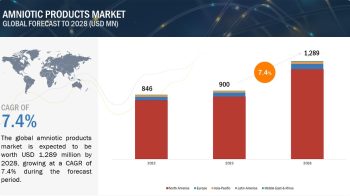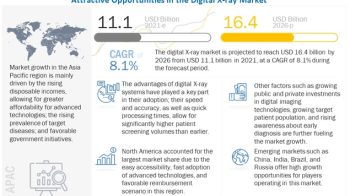Sleep Apnea Care Market Dynamics:
Driver: Large pool of undiagnosed sleep apnea patients
Although highly prevalent in the elderly, sleep apnea affects people of all ages and is one of the most common sleep disorders across the globe. The health impact of sleep apnea is quite substantial but under-recognized.
Worldwide data suggests that sleep apnea impacts more than 936 million people worldwide, which is nearly 10 times greater than previous estimates (Source: ResMed). In the US alone, around 22 million Americans suffer from obstructive sleep apnea (OSA); of which, 80% of moderate and severe OSA cases are undiagnosed [Source: American Sleep Apnea Association (ASAA)]. In the UK, OSA affects an estimated 1.5 million adults; up to 85% of these cases are undiagnosed or untreated. In countries with huge population bases, such as India and China, the diagnosis rate of OSA is <1% (Source: Press Trust of India, 2017 and China.org.cn).
Restraint: High cost of CPAP machines
In most developed countries, the cost of a CPAP device is either reimbursed or provided by medical insurance companies. The main reason for non-adherence is non-acceptance on the part of the patient, mainly due to the mask causing discomfort or claustrophobia. However, conditions are different in most developing countries, where insurance access is minimal and insurance companies usually do not cover the cost of a CPAP device.
In countries like India, CPAP is not covered by private insurance companies. Only some government employees are able to be reimbursed for CPAP therapy, and that too reimbursement ranges from 30% to 100% depending on the reimbursement rules of various government offices. CPAP is generally an out-of-pocket expense for most of the Indian population. This is a major limiting factor for therapy adoption in these countries.
Download PDF Brochure@
https://www.marketsandmarkets.com/pdfdownloadNew.asp?id=719
Recent Developments in the Global Sleep Apnea Devices Market:
# In 2019, ResMed (US) launched AirFit N30i, its first top-of-head-connected nasal CPAP mask, across the US with a newly designed nasal cradle cushion that sits just under the wearer’s nose.
# In 2016, Koninklijke Philips (Netherlands) launched its Dream Family solution which comprises of a DreamWear mask, DreamStation PAP device, and DreamMapper patient engagement app.
End Users:
Home care settings/individuals projected to grow at the highest CAGR in the global sleep apnea devices market during the forecast period
On the basis of end user, the sleep apnea devices market has been segmented into sleep laboratories & hospitals and home care settings/individuals. The sleep laboratories & hospitals segment accounted for the largest share of the market in 2018, while home care settings/individuals end-user segment is projected to grow at the highest CAGR during the forecast period. This high growth is likely driven by factors such as the rising preference for home sleep testing by both patients and private insurance companies, along with the favorable reimbursement scenario for home sleep testing.
Key Questions Addressed by the Report:
# Which type segment will dominate the sleep apnea devices market in the future?
# Emerging countries have immense opportunities for the growth and adoption of sleep apnea devices, therefore will this scenario continue in the next five years?
# Where will all the advancements in technology offered by various companies take the industry in the mid to long term?
# What are the upcoming alternative therapies and devices related to the same in the Sleep Apnea Care Market?
North America is expected to dominate the sleep apnea devices market during the forecast period
On the basis of region, North America accounted for the largest share of the global sleep apnea devices market in 2018, whereas, the Asia Pacific region registered the highest CAGR during the forecast period. North American accounted for the largest share owing to factors like an increase in the number of patients diagnosed with sleep apnea in the region, growth in awareness initiatives being taken by various government and non-government organizations, availability of adequate funding for research and development, and substantial growth in the usage of oral appliances in the region.
Request Sample Pages@
https://www.marketsandmarkets.com/requestsampleNew.asp?id=719
Opportunity: Increasing focus on telemedicine and mHealth (mobile health)
Several studies have reported that a main predictive factor for long-term CPAP compliance is patient adherence in the first few weeks of treatment. To improve compliance, support and follow-up during this period must be prompt. Telemedicine offers this kind of assistance since long waiting lists make it difficult to provide such support. Several studies suggest that patients in the telemedicine group expressed high satisfaction with their care. They especially liked the convenience of a live video visit with a sleep doctor.
Obstructive sleep apnea is a highly prevalent chronic condition, and telemedicine could play a vital role in the different phases of its management. In the future, using new devices capable of signal acquisition and analysis is expected to refine obstructive sleep apnea diagnosis; even smartphones’ built-in sensors could offer improved comfort and the possibility of home sleep monitoring. Continuous positive airway pressure titration could be performed with wireless devices, whose parameters can be changed remotely from sleep centers. Finally, the follow-up phase could be specially improved by using remote continuous positive airway-pressure data, self-management platforms, and mobile applications for patient feedback.
Key Players:
Major players operating in the Sleep Apnea Care Market include ResMed (US), Koninklijke Philips (Netherlands), Fisher & Paykel Healthcare (New Zealand), SomnoMed (US), Oventus Medical (Australia), Compumedics (Australia), Löwenstein Medical (Germany), Drive DeVilbiss Healthcare (US), BMC Medical (China), Braebon Medical (Canada), and Panthera Dental (Canada).


